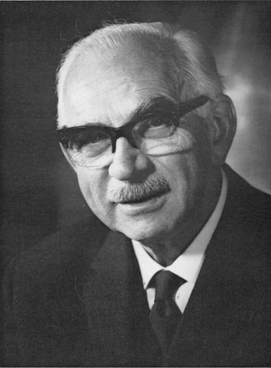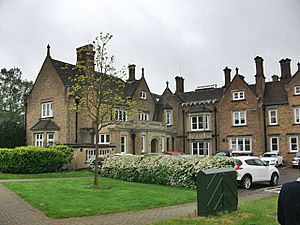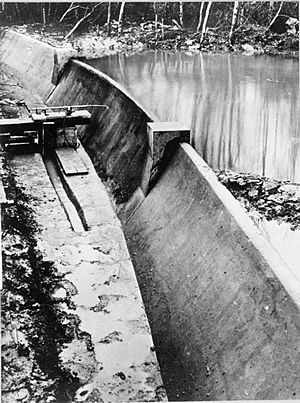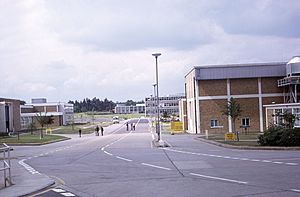William Glanville facts for kids
Quick facts for kids
Sir William Glanville
|
|
|---|---|
 |
|
| Born | 1 February 1900 |
| Died | 30 June 1976 (aged 76) |
| Nationality | British |
| Education | Queen Mary, University of London |
| Occupation | Engineer |
| Spouse(s) | Millicent Carr |
| Children | one daughter and one son (John Glanville) |
| Parent(s) | Amelia and William Glanville |
| Engineering career | |
| Discipline | Civil |
| Institutions | Institution of Civil Engineers (president), |
Sir William Henry Glanville (1900–1976) was a brilliant British civil engineer. He made huge contributions to how we build roads and structures. During World War II, he and his team helped the war effort in many ways. They designed special runways and even helped create the famous bouncing bombs used in the Dam Busters Raid.
Glanville was highly respected for his work. He received many awards and honors. These included being made a Commander of the Order of the British Empire (CBE) and a knight.
Contents
Early Life and Education
William Glanville was born on February 1, 1900. His hometown was Willesden, in Middlesex. His father was a builder from Cornwall. Friends knew William as Bill.
He went to Kilburn Grammar School from 1911 to 1918. He was very good at shooting, even winning prizes. He also taught himself shorthand. After school, he briefly served in the British Army during World War I.
After the war, he used a special grant to study civil engineering. He went to East London College (now Queen Mary, University of London). He was an excellent student. In 1922, he graduated at the top of his class.
Working at the Building Research Station
After college, Glanville started working at the Building Research Station (BRS). This was in East Acton. The BRS was a new place for scientific research. It aimed to improve building methods in Britain.
Glanville's first big project was studying concrete. He looked at how water could pass through concrete. He found that the amount of water mixed with cement was key. He also learned that keeping concrete wet while it dried made it much stronger. This was new and important information. Before his work, concrete building was mostly based on guesswork. Glanville brought science to it.
In 1925, Glanville became an associate member of the Institution of Civil Engineers. The BRS then moved to Garston. Here, Glanville focused on new ways to test building materials. He designed special equipment. He researched concrete, steel, and brickwork. His work on how concrete changes shape under weight earned him a PhD in 1927. By 1928, he was the Chief Engineer at BRS. He oversaw all engineering research there. In 1930, he earned another degree, a DSc. He later said this time was the happiest in his career.
Glanville's research helped create new rules for using reinforced concrete. These rules became part of British Standards. They are still used by engineers today. He also studied how concrete piles could be driven into the ground safely. This helped builders avoid dangerous failures.
In 1936, Glanville moved to the Road Research Laboratory (RRL). He became its deputy director. He kept his interest in concrete throughout his career.
Leading the Road Research Laboratory
The RRL was set up in 1933. Its goal was to improve roads. When Glanville joined, he took on more of a leadership role. He still studied concrete roads. He also started a new section for soil mechanics. This was a new and important field. It helped engineers understand how soil affects buildings and roads.
Glanville became the director of the RRL in 1939. He believed his work should cover all road research. He wanted the RRL to help make roads safer.
Important War Work
When World War II started in 1939, Glanville became a chief scientific advisor. He led research for the Ministry of Home Security. His team worked on many defense projects. About 70% of their work was for the war.
Glanville advised on building concrete runways and special airfields. His team developed "Prefabricated Bituminised Surfacing" (PBS). This was a temporary runway material. It could be laid over soft ground. It was easy to move and lasted about four months. Millions of square yards of PBS were made during the war.
His soil analysis team was very helpful. They assessed European beaches before the Normandy Landings. This helped plan where troops could land. Their soil research also influenced how tanks and aircraft were designed.
Glanville also worked on explosives. He helped develop "plastic armour". This was a protective plating for ships. It was made of stone chips and bitumen. It protected ships from bullets and fire. Glanville was even named on the patent for this material.
His department also studied how explosions affected buildings. They tested ways to protect windows. They also looked at how blast pressures could harm people. They even developed smoke screens to hide important factories from enemy bombers.
One of Glanville's most famous contributions was his work on the bouncing bombs. These bombs were used in the famous Dambusters raids. Glanville figured out the right amount of explosives needed. He also used small scale models of the dams to test his ideas. His tests helped the pilots know exactly where to aim. His predictions for the dam breaches were very accurate.
After the War
After the war, Glanville stayed at the RRL. He focused on making roads safer. The RRL started doing experiments on real roads. This led to better road surfaces and road marking paint. They also found new ways to make roads less slippery.
The RRL grew much larger in 1946. It started researching road safety and traffic. Their work led to better tires, zebra crossings, and speed limits. They also researched safety helmets and seat belts. Glanville pushed for more zebra crossings. This helped reduce pedestrian deaths by 11% by 1951. He correctly predicted that more people would use cars after the war.
Under Glanville, the RRL became a world leader in road research. They helped develop Britain's first motorways. One building at the new RRL site was named Glanville Hall in his honor. Glanville believed that research should always help solve real-world problems. He wanted engineers to use scientific findings in their work.
Professional Life and Retirement
Glanville was involved with many engineering groups. He was elected President of the Institution of Civil Engineers in 1950. He was so popular that some members wanted him to serve a second term! He also served on committees for British Standards and the Royal Engineers.
In 1965, Glanville retired from the RRL at age 65. He then started his own engineering consulting business. He also worked as a consultant for the International Road Federation for ten years. He helped organize world meetings on roads.
Sir William Glanville passed away suddenly on June 30, 1976. He was at his home in Northwood.
Awards and Honours
Glanville earned his PhD in 1925 and a DSc in 1930. The government recognized his important work. He was made a Commander of the Order of the British Empire (CBE) in 1944. He became a Companion of the Order of the Bath (CB) in 1953. In 1960, he was knighted, becoming Sir William Glanville.
He received many other awards, including the Gold Medal from the Institution of Structural Engineers in 1962. He was also an honorary member of several engineering institutions. In 1958, he was elected a fellow of the Royal Society. He wrote 115 articles, papers, and books.
Personal Life
William Glanville married Millicent Carr on June 20, 1930. They had a daughter and a son. His son followed in his footsteps and became a civil engineer. Millicent often traveled with Glanville to meetings and conferences. In his retirement, Glanville helped his son's engineering company.
A memorial service for Sir William Glanville was held in November 1976. He was remembered as one of the greatest engineers of his time.




